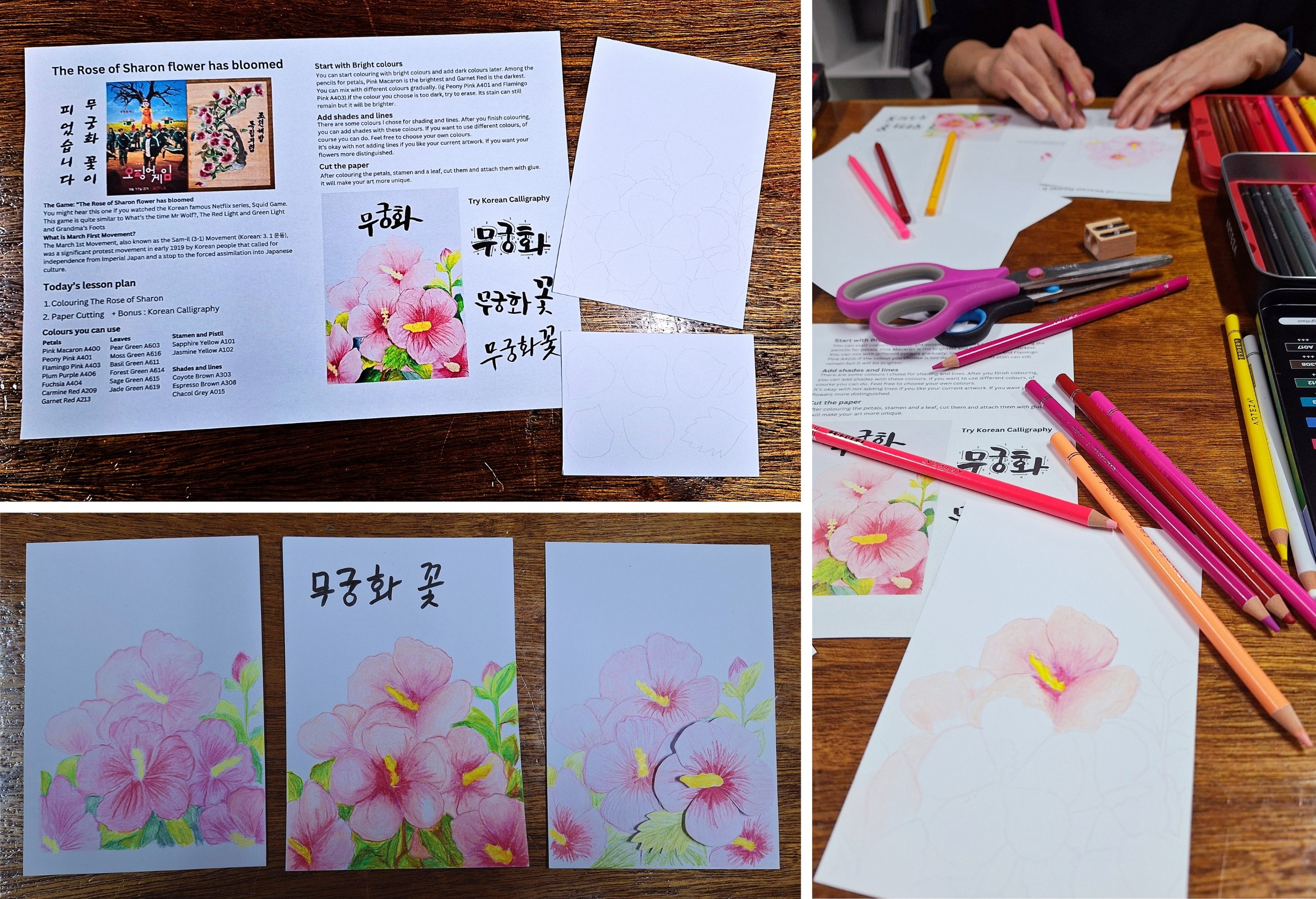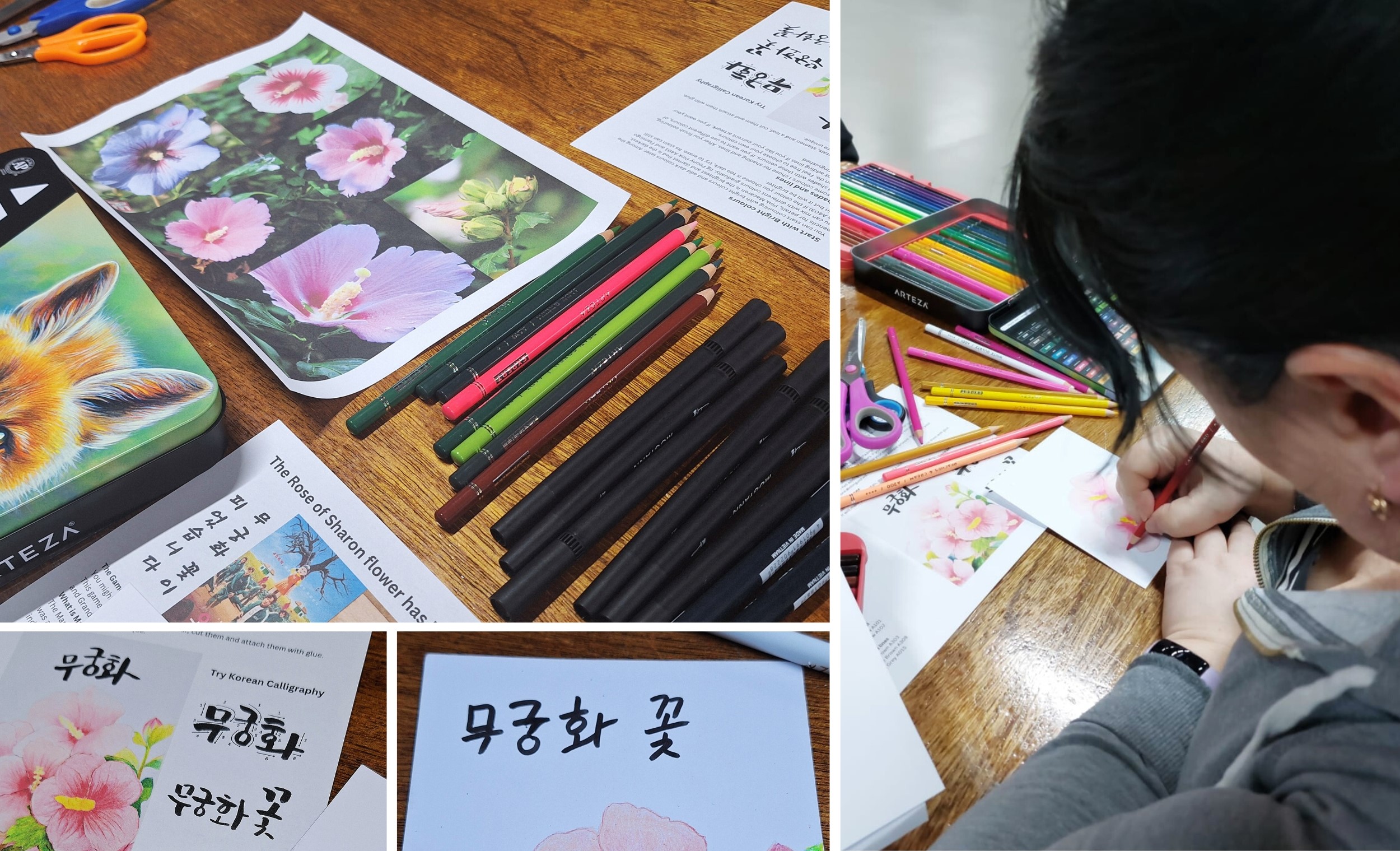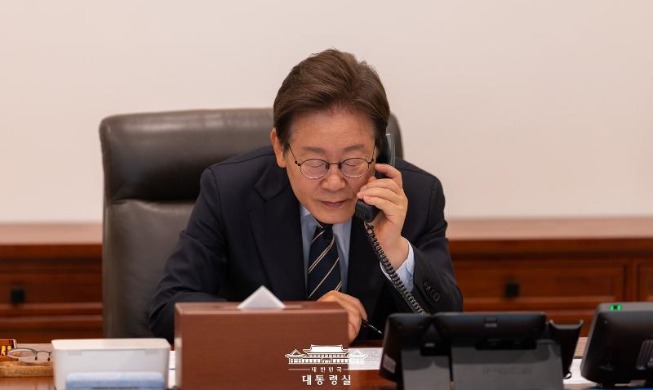- 한국어
- English
- 日本語
- 中文
- العربية
- Español
- Français
- Deutsch
- Pусский
- Tiếng Việt
- Indonesian
By Honorary Reporter Marianna Szucs from Hungary
Photos = Marianna Szucs
The Korean Cultural Centre in London on March 2 held a mugunghwa (rose of Sharon) drawing workshop to commemorate the 105th anniversary of the March First Independence Movement.
The event promoted the significance of this historical event through informal interactive sessions, and I attended with my sister and met likeminded people also passionate about Korean culture.
The first section introduced the mugunghwa, the national flower of Korea, including its range of shades from light pink to dark purple. This beautiful five-petal flower conveys the meaning "eternal blossom that never fades," a sentiment matching the persevering spirit of Koreans to gain liberation from Japanese colonial rule (1910-45).

These are the materials provided at the mugunghwa drawing workshop, which featured basic information about the March First Independence Movement and the cultural significance of Korea's national flower.
On March 1, 1919, Koreans nationwide took to the streets to peacefully demonstrate against Japanese colonial rule and demand independence in Korea's first revolt against such occupation.
The workshop also discussed how the flower grew embedded into the everyday lives of Koreans, from nursery rhymes and children's games to K-dramas. Basic information on the movement and the cultural significance of the mugunghwa were presented.
Yoo So-young, an illustrator who led the workshop, showed minhwa (folk paintings) and participants played a short game to explore it. This activity linked the two themes of the mugunghwa and the movement.
Thirteen of the flowers were arranged in the form of the Korean Peninsula on a branch representing the country's mountain ranges, with the number 13 standing for the first of March. Attendees were encouraged to add Korean calligraphy to their drawings.
Next was a drawing session on postcards with pictures to color. Yoo explained the process and prepared a color scheme guide, as everyone got focused as soon as they started coloring after checking the sample drawing.

Participants were encouraged to add Korean calligraphy to their drawings.
Yoo suggested what colors to use next and how to draw the lines and shades of the petals. Participants also learned interesting things from one another while doing the drawings.
Some even completed the mission of coloring extra leaves and gluing them on their postcards to add a 3D effect to their drawings. Yoo helped me add Korean calligraphy to my drawing, on which I wrote mugunghwa in Hangeul.
This creative workshop used artistic creativity to raise awareness of a crucial event in Korean history.
msjeon22@korea.kr
*This article is written by a Korea.net Honorary Reporter. Our group of Honorary Reporters are from all around the world, and they share with Korea.net their love and passion for all things Korean.
